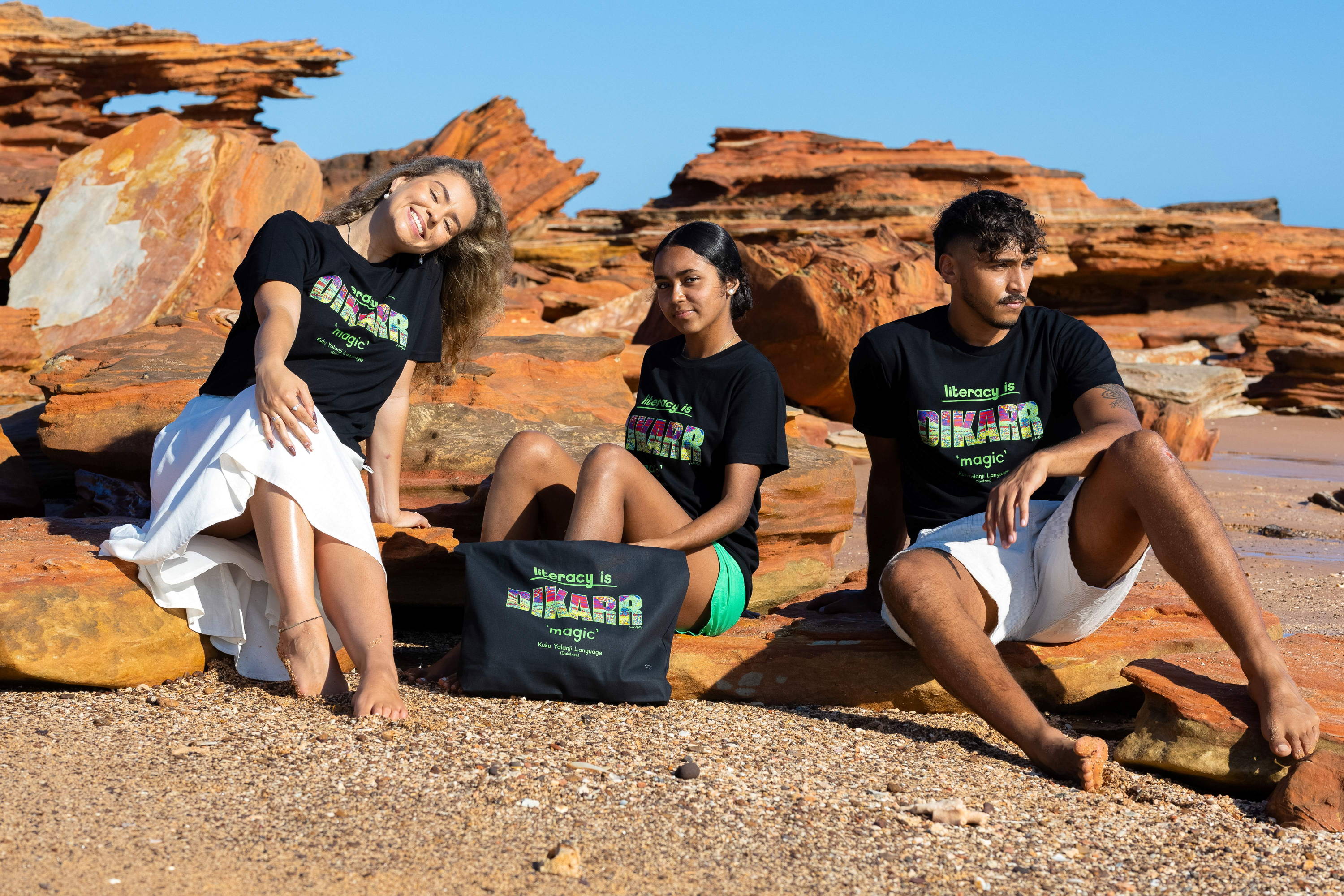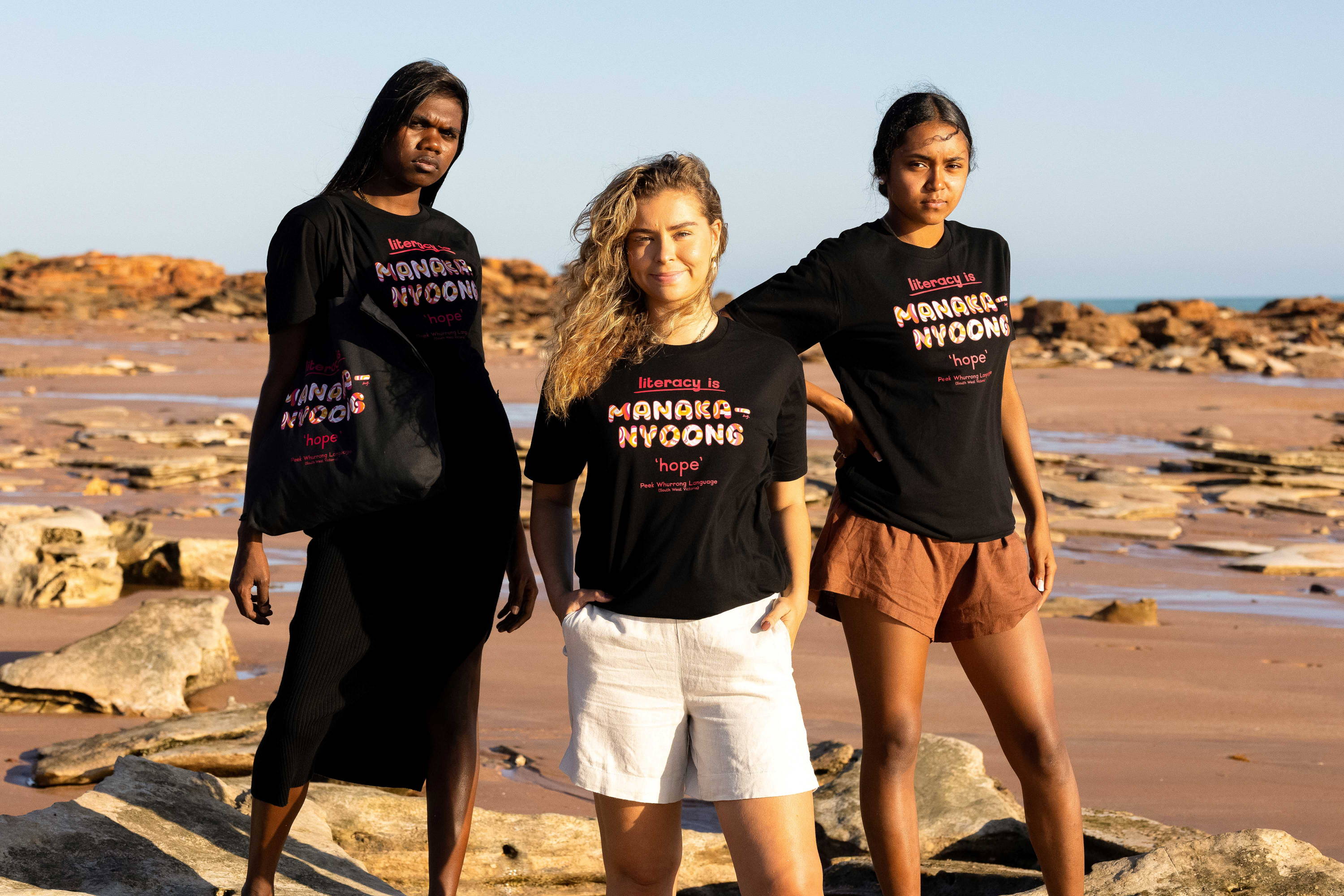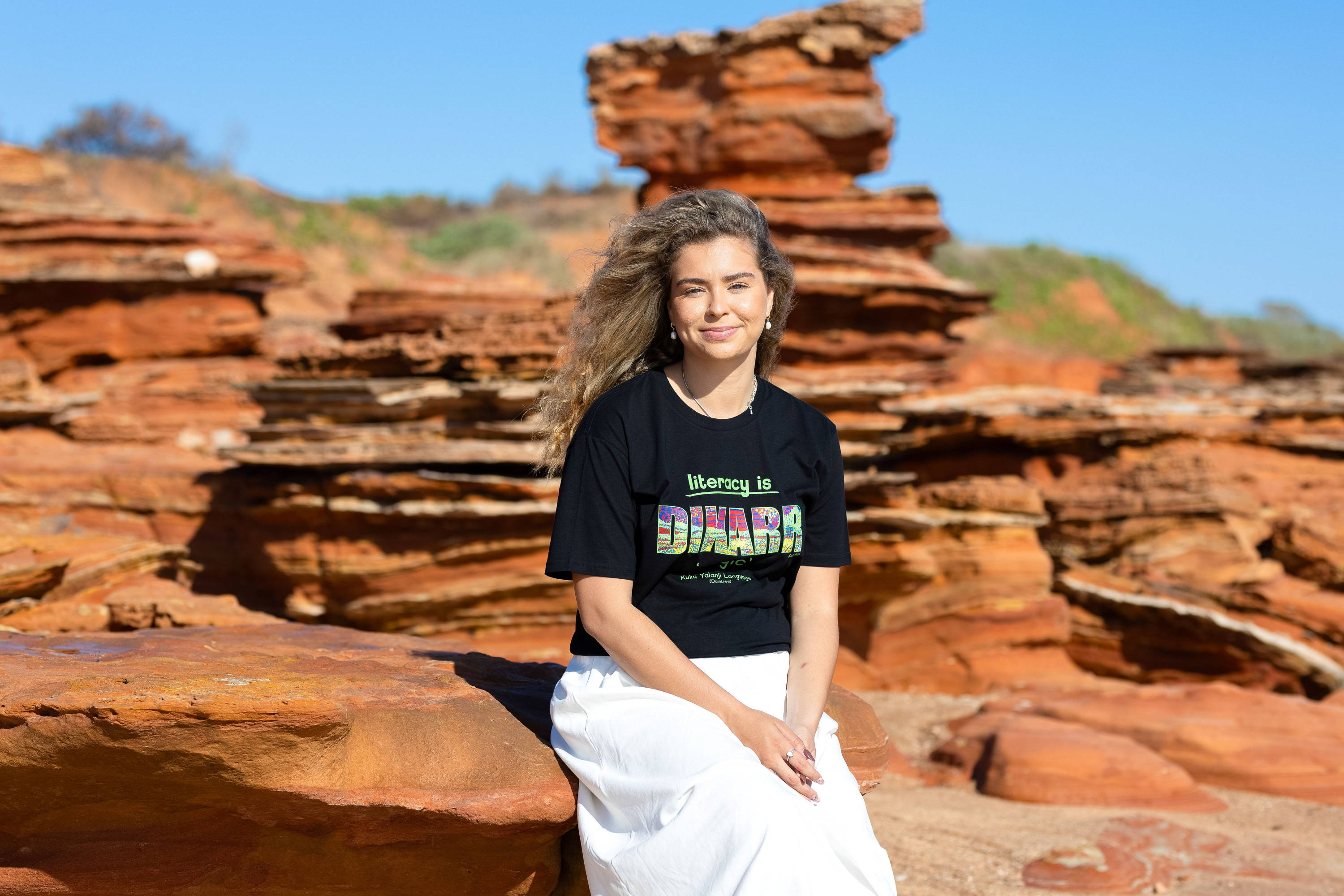Yarn x ALNF present First Languages
Launch
ALNF Raise Collection First Languages
TEAGAN KUM SING
AUGUST 22, 2023
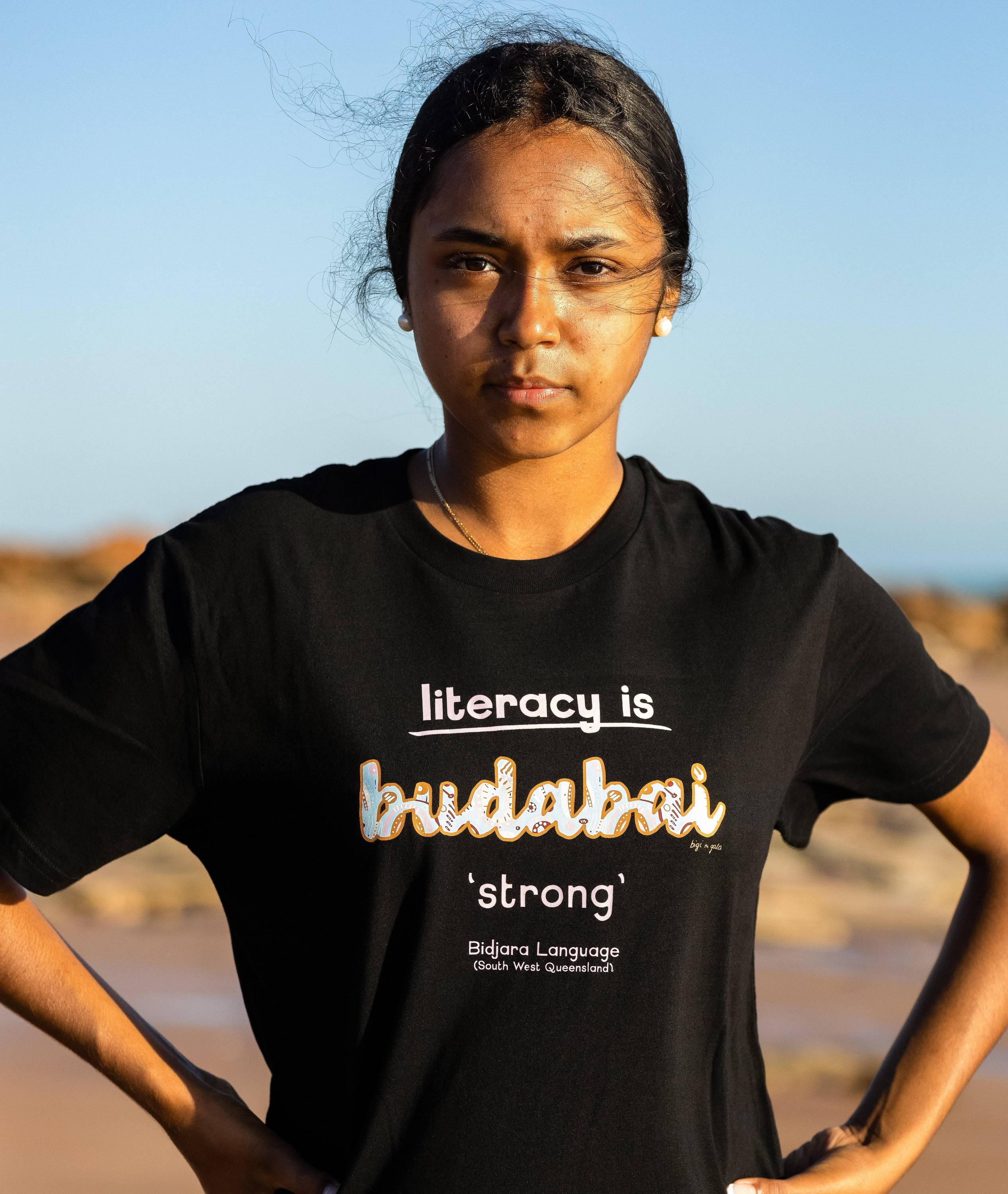
Yarn x ALNF present First Languages
A Yarn Raise collection in support of the Australian Literacy & Numeracy Foundation (ALNF) and their programs that contribute to the revival, maintenance and revitalisation of Indigenous First Languages.
Inspired by ALNF’s Literacy is Freedom slogan, we asked some of our collaborating artists to tell us in their language what literacy means to them. They designed their responses into a piece that celebrates the power of First Languages and the power of literacy.
For each product sold from the First Languages collection, Yarn will donate $2 to ALNF to support their work in First Languages revitalisation through initiatives such as the Living First Languages Platform.
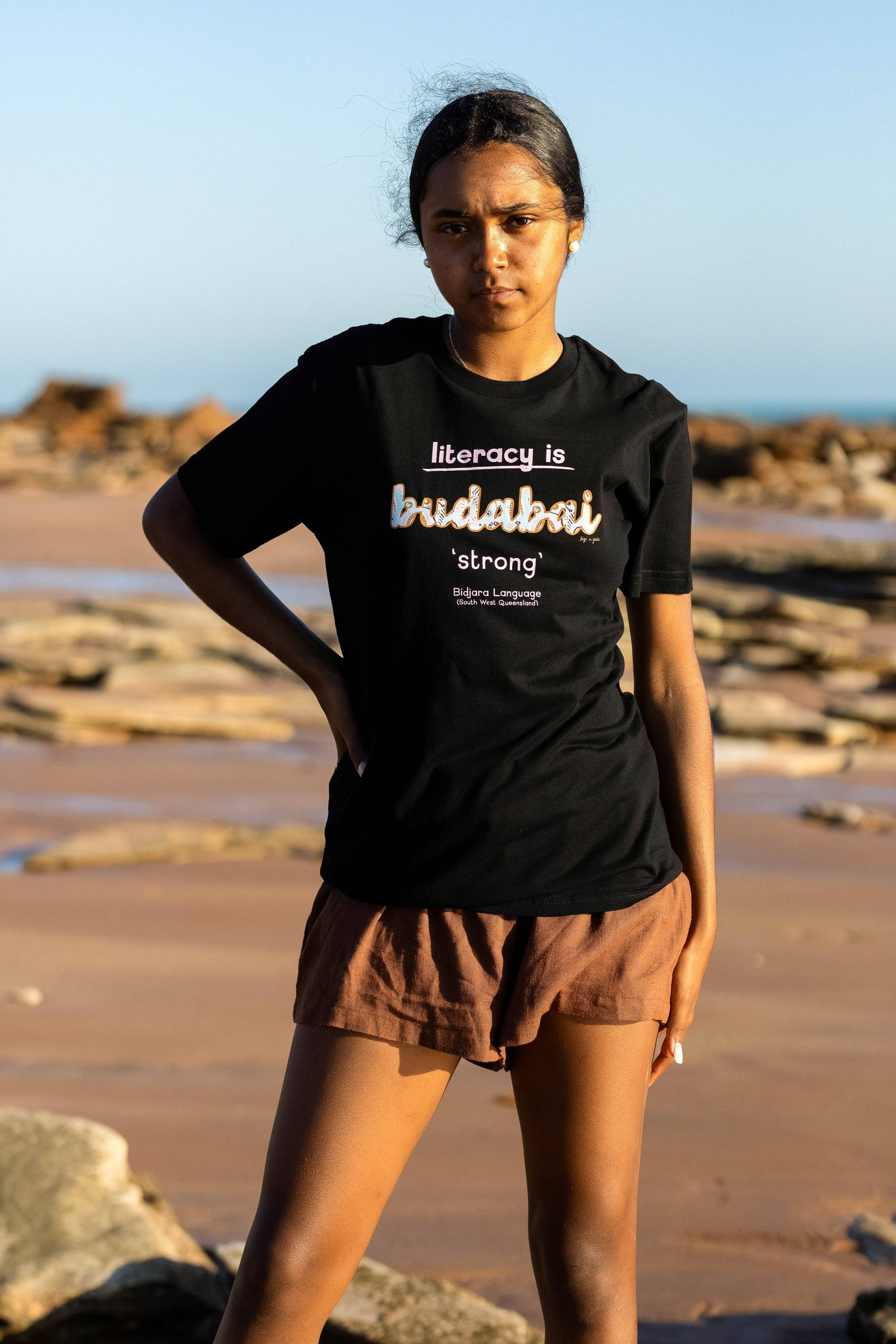
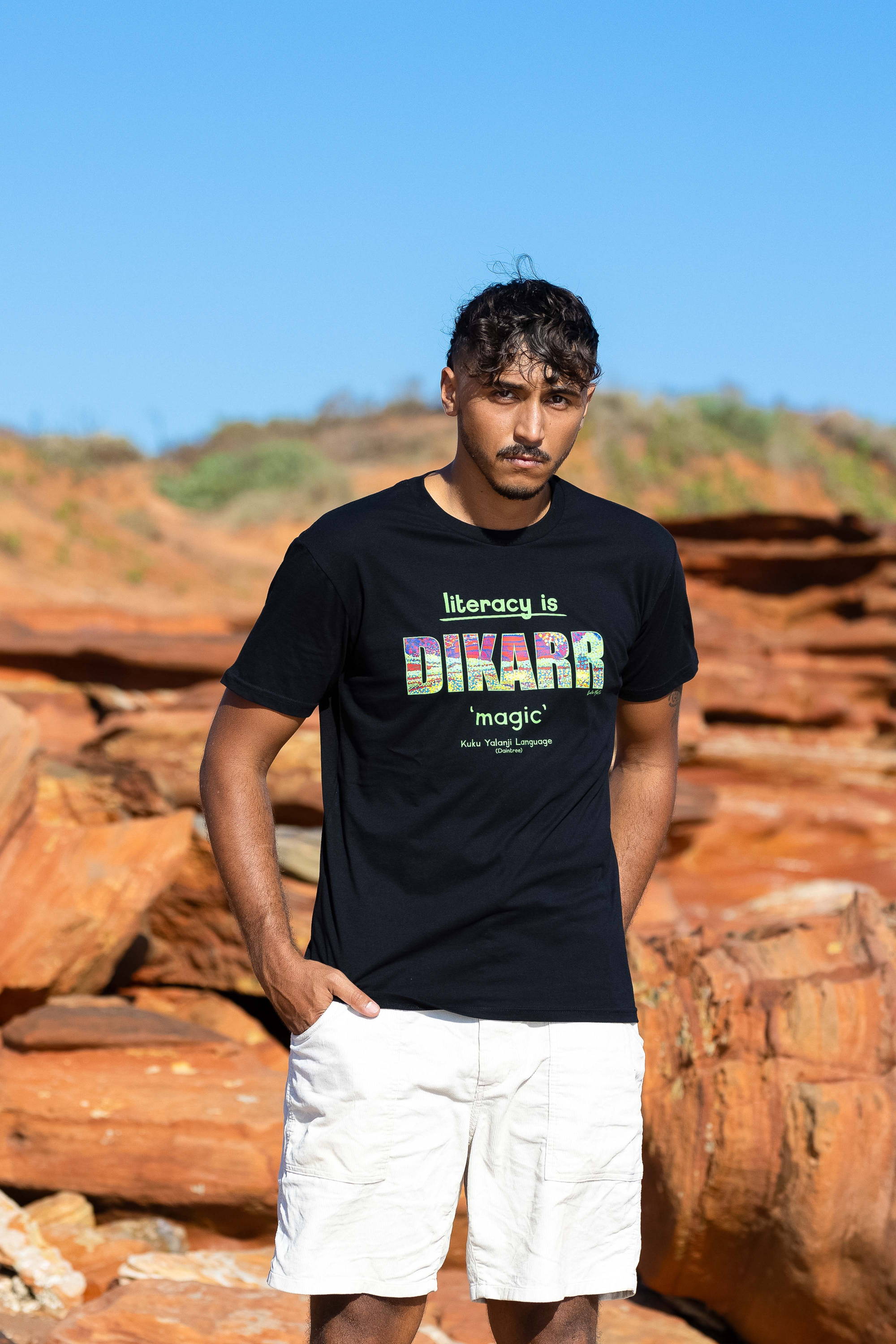
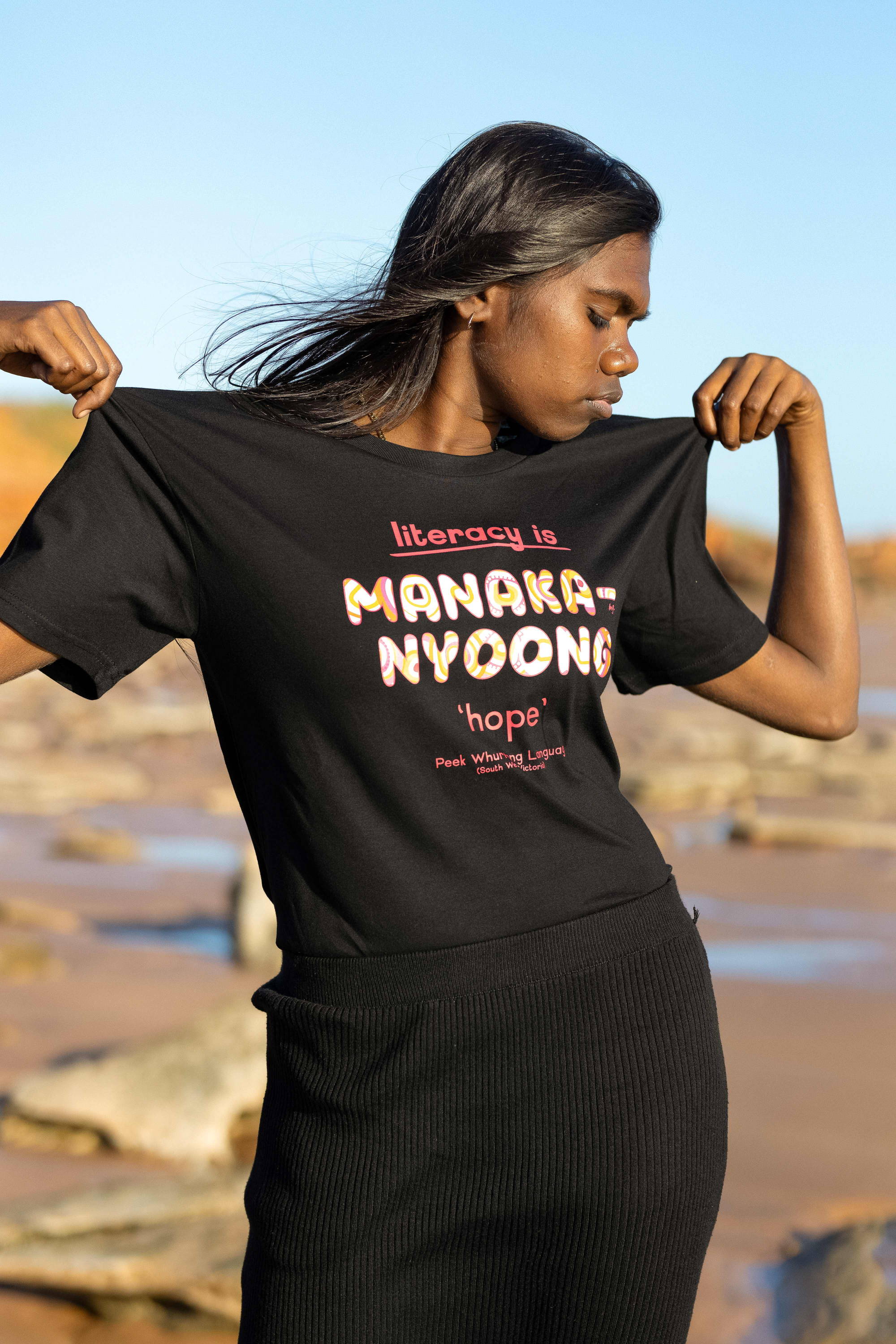
Indigenous First Languages
“Language is family, language is life. And language is also part of our spiritual body. So without the language, we can't communicate with our people, pass on cultural knowledge. For myself as a young mother, I must pass on my cultural knowledge and language to my daughter because that's what my father did to me. Our ancestors never failed us. That's why we have culture today. So we must continue what our ancestors left for us. ”
-Lala Gutchen
ALNF Representative and Erub Mer Living First Language Program Facilitator
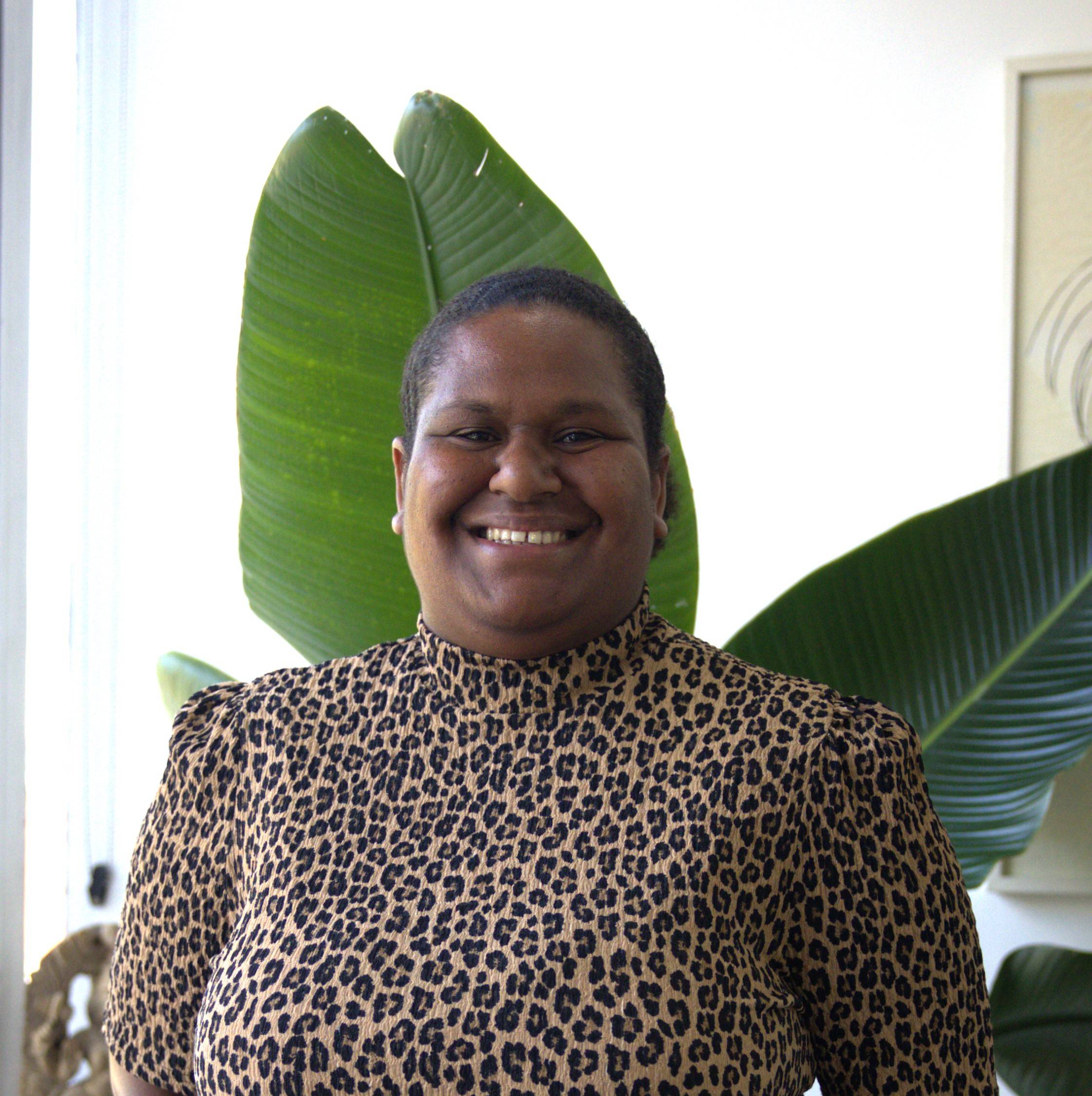
Within Australia, 81,100 people identify as the speaker of an Indigenous language and 276,300 people identify language as part of heritage. But these figures do not represent the role language plays in the life and culture of those who speak it, as this is far beyond measurement by numbers. They also do not capture the global benefits of maintaining a diverse and rich landscape of cultures.
The ALNF writes:
“In Australia, our languages are being lost at among the highest rates in the world. When languages die, we lose more than just words. We lose a carrier of culture; and the connection we share with ourselves, our traditions, and cultural history. Teaching First Languages supports the intergenerational transmission of these languages, creating a new generation of speakers, revitalising vulnerable languages into the future, and contributing to a better world for us all.”
One of the goals of the Australian Government’s Closing the Gap strategy is to ensure that “By 2031, there is a sustained increase in number and strength of Aboriginal and Torres Strait Islander languages being spoken.” And globally, the United Nations has announced that the International Decade of Indigenous Languages would begin in 2022. A major goal of this decision was to highlight the many ways in which languages, particularly Indigenous languages, benefit not just their speakers but all of us through their contribution to the world’s rich cultural diversity. In Australia, as one of the most culturally rich and innovative countries on Earth, we have a responsibility to support First Nations communities in their language revitalisation efforts.
Who are ALNF?
The ALNF is a national charity dedicated to raising language and literacy standards. They have over 20 years experience in developing award-winning literacy programs supporting marginalised communities across Australia such as Aboriginal and Torres Strait Islander communities, refugees, and other vulnerable Australians.
“ALNF’s programs are targeted, specialised and community driven. ALNF believes that literacy is freedom: literacy allows individuals to access education, participate meaningfully in our society, and to have a voice. It is a basic human right.”
The Living First Language Platform is an initiative by ALNF that empowers communities to teach and learn in their First Languages. Yarn Raise is proud to partner with ALNF and our collaborating artists to present our First Languages Collection.
The Living First Languages Platform
“We must revive our language. Because it belongs to us and the country that we live on. Without the language, we can't identify ourselves, our cultural practices and all other things that we do.”
- Lala Gutchen
The Living First Language Platform is an app that transforms spoken language into learning resources.
The app is used by First Nations communities who have registered their interest. Community Elders indicate the correct pronunciation of words. This is then used to guide a written representation of the language. Spoken First Language elements are transformed into reading and writing resources such as dictionaries, pronunciation guides, and reading and writing games.
Language input comes from the community itself, so they retain ownership, control and management of their language. Using the resources on the platform, community members are empowered to read and write in their First Language. This develops literacy skills, supports the existing use of the language, and adds an extra tool for sharing and safeguarding the language for future generations.
First Language reading and writing provides users with the framework that can help literacy and learning skills. And if a goal is to improve outcomes in schooling or the English language, these skills are transferable. The platform can also aid in translation, giving users the skills to make comparisons and contrasts with English. And a groundwork of literacy skills in the learner’s first language can assist in school-based and English language learning and retention.
You can read more about ALNF’s award-winning Living First Languages Platform here.
About ALNF representative Lala Gutchen
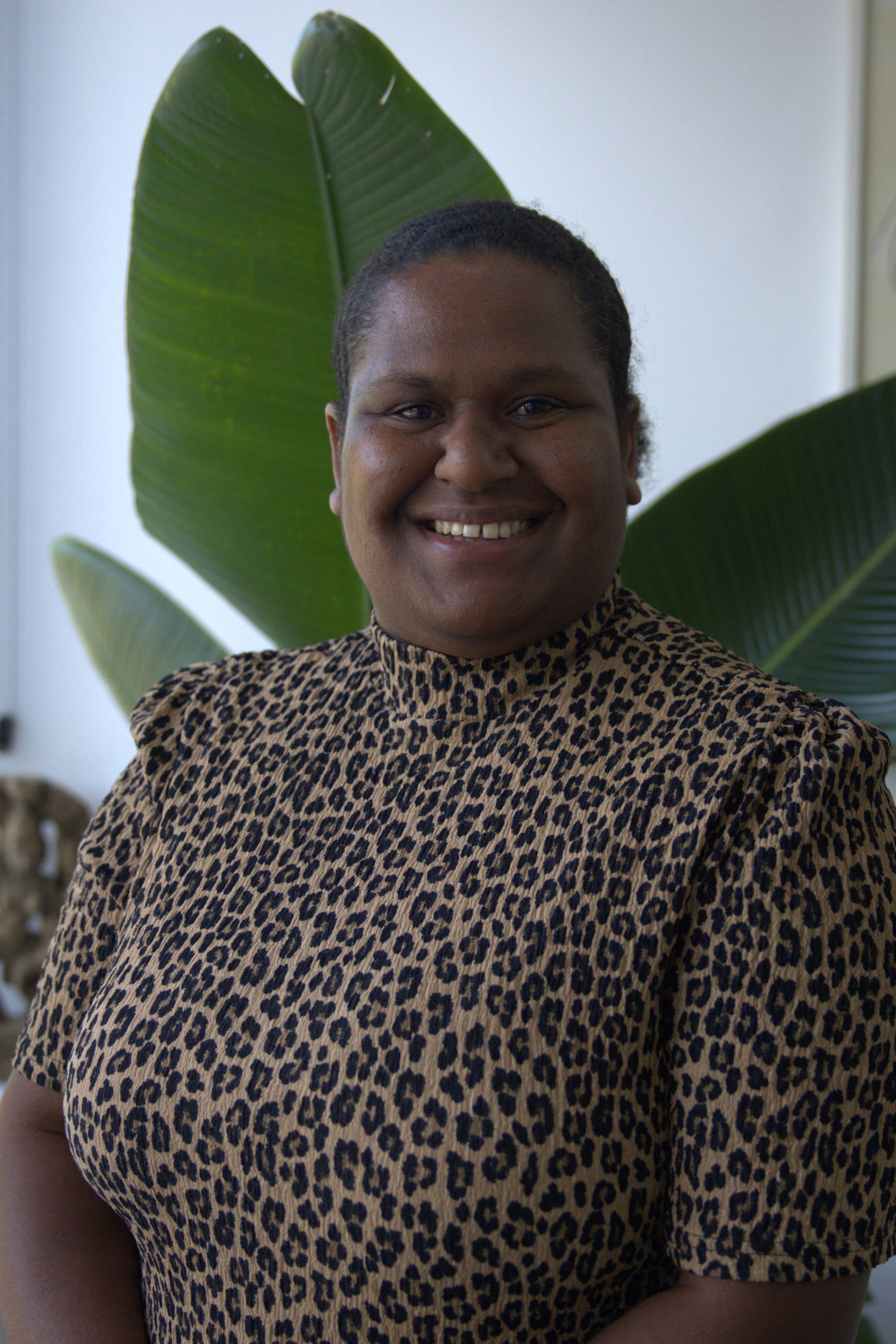
“When you start to speak, [identity] comes out of your mouth. They know which country you belong to, in which land, which tribe, people you belong to because of the spoken word that comes out of your mouth.
And I'm proud of my identity and where I've come from. This way I practice that and speak it all the time. And once upon a time, that's what our ancestors did. And it's our duty now. It's our duty and obligation to care for it. And practice it just like our ancestors did, because they didn't fail us.
So that's why it's really important to revive the language and keep it going in this modern world now.”
- Lala Gutchen
Lala is a proud Meuram woman from Erub Island in the Torres Strait. She helped bring the ALNF’s Erub Mer First Languages project to life as the program facilitator. Through Lala’s dedication to revitalising Erub Mer, the project has developed an Erub Mer literacy game and – together with her father, Kapua – recorded over 2000+ previously unrecorded words in Erub Mer, ensuring the Language is shared for generations to come.
Lala works tirelessly across a breadth of campaigns and projects, all driven by a unifying mission to protect and preserve her Country and Culture for future generations. She was awarded the 2023 National NAIDOC Caring for Country and Culture Award for her incredible work.
Read more about Lala here.
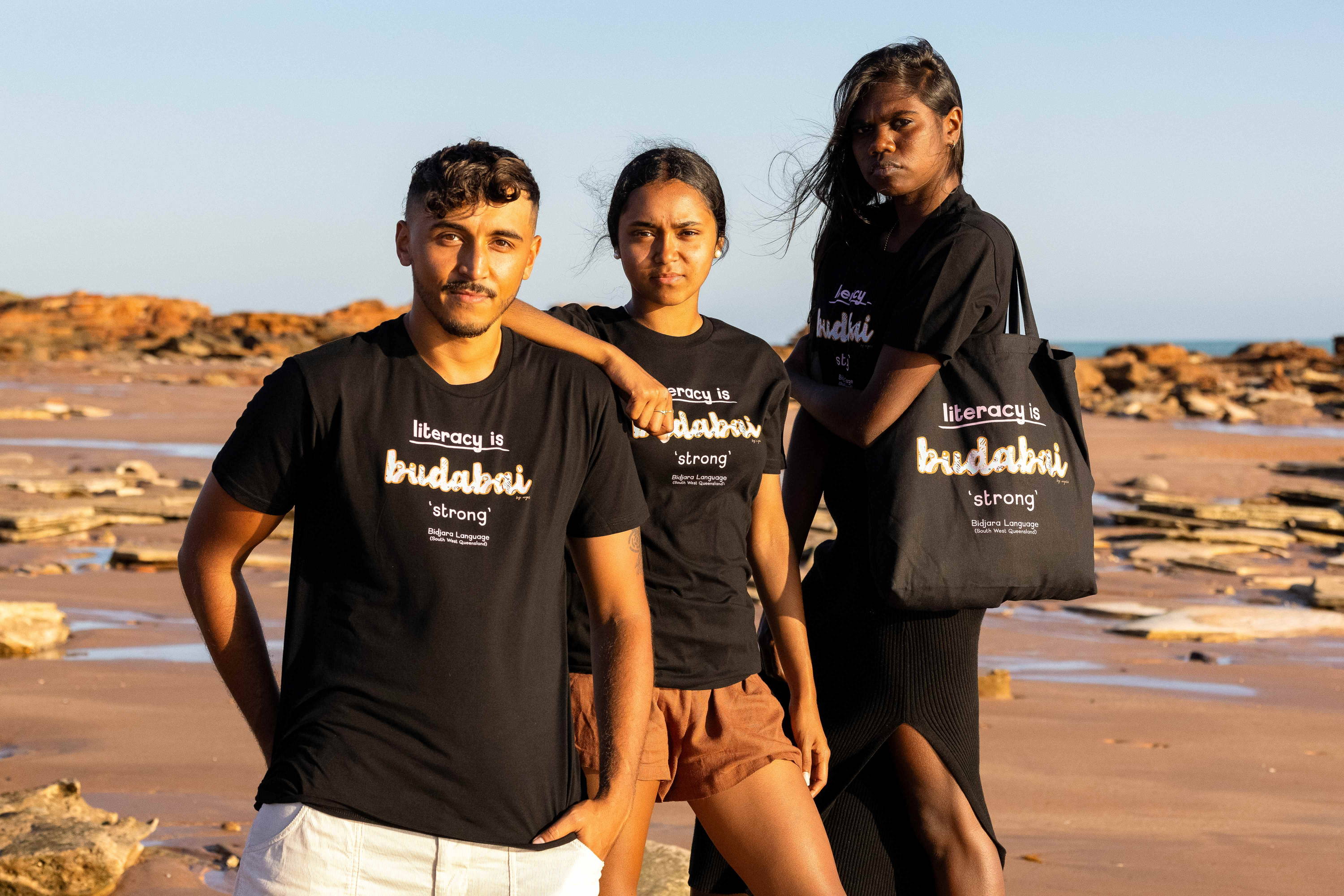
About the Artists
“Literacy is Freedom” - ALNF Slogan
We asked Yarn collaborating artists Luke Mallie, Merindah-Gunya and Sheri Skele to each choose a word from their language group that represents what literacy means to them. Each Tee features the language group and a translation to English. Our goal is to showcase just some of the 250+ First Languages of Australia, and how valuable and resilient these languages are.
The collection celebrates the power of literacy and the importance, diversity, and endurance of First Languages. By keeping language visible, circulating and in discussion, we are hoping to expose new people to the power and diversity of Australia's many languages, as well as raise funds for and draw attention to the work ALNF is doing to support their revitalisation.
Each artist has a unique relationship with language. Below they tell their story of what language means to them, their experience with language, and the important connection language brings to culture.
Literacy is… Dikarr
“Magic”
Kuku Yalanji Language of Daintree region
Chosen by Luke Mallie
“I’m Luke Mallie, I'm a visual artist. My mother comes from the Daintree Rainforest, from the Kuku Yalanji people, and my father comes from Moa Island in the Torres Strait Islands.
I think the Kuku Yalanji language has still strong use up in the Daintree. But as kids growing up in Brisbane, we learned language from my mother. We mostly learned the swear words, all the naughty words that we used to call each other."
"My artwork is inspired by the Daintree Rainforest and Dikarr means magic. So there's a lot of magic that happens in the rainforest and down to the ocean where there's the Reef. The Great Barrier Reef and the Daintree Rainforest are two World Heritage places that meet. Of all the places in the world, they're the only two that meet.
Language represents connection to Country. Everything you hear in languages, it represents an animal or tree or a way of life up in the Daintree. Everything has a purpose and the language relates directly to that. So it's got a real strong connection to that area.
It's important for me to keep the language alive. Up in the Daintree that's a strong culture up there, so it'd be great to keep that language alive and have them be able to speak it. I think it'd be awesome to have that language preserved for another thousand years. So people can still learn it as the people get older and the language doesn't die out. Kids can learn it and, you know, they'll hear their great grandparents speak it, instead of old recordings. It's going to be pretty new technology that keeps it alive now.”
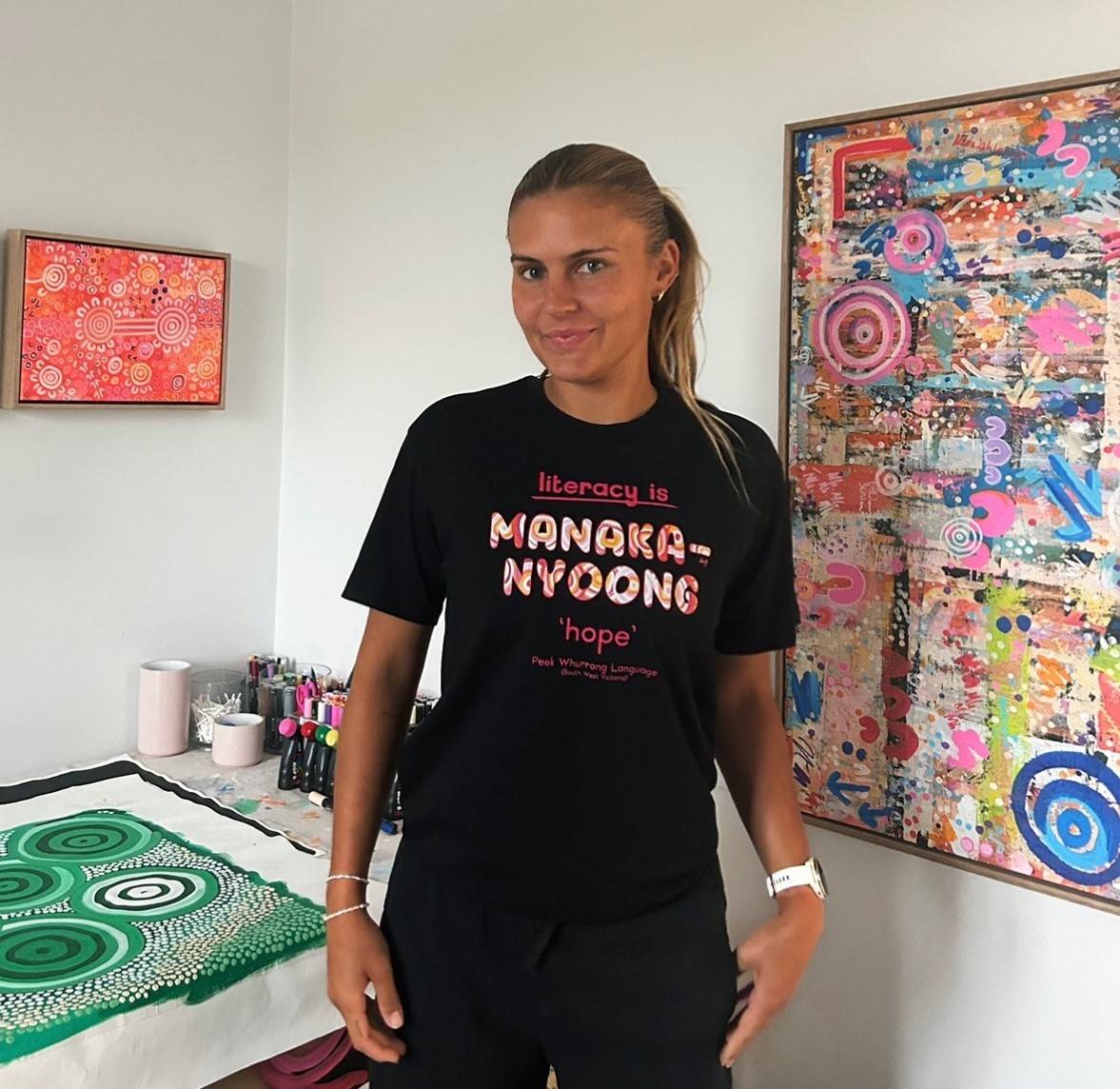
Literacy is… Manaka-Nyoong
“Hope”
Peek Whurrong Language of South West Victoria
Chosen by Merindah-Gunya
“Ngata my name is Bayley Mifsud, my Aboriginal name is Merindah-Gunya, which means beautiful spirit in my language, Peek Whurrong language.
I'm a proud Peek Whurrong and Kirrae Whurrong woman of the Marr Nation which is in Warrnambool, Victoria. "
"I felt that ‘hope’ was the right word to use because for my mob and my Elders it wasn’t legal to speak language up until not that long ago. So for me it's a privilege that we’re able to speak the language as a human right. ‘Hope’ is an optimistic word that shows the progression of how we’ve evolved with Indigenous and non-Indigenous communities.
I learnt Peek Whurrong language off my nan and my dad growing up. It is something that my family tried to educate us on growing up, so we did learn and use words throughout our childhood and now adulthood.
My language isn't commonly spoken to my knowledge, there aren't any elders who speak fluent Peek Whurrong language. I wouldn't say that I use the language as often as what I would like, however I am trying to integrate it into my life word by word. My favourite word in my language would have to be Yakeen, which means dream. And Ngata is how I say hello in Peek Whurrong language
Learning the language is extremely important to me to be able to connect to my Aboriginal culture and also to be able to continue my Aboriginal culture. Being able to keep the language alive is so important, it's being able to keep the culture alive.
Given the difference in the diversity between all of the language groups, I just think it's such a special part that's really true to who your mob is. Because it's a language that only mobs speak. It's something which has been disconnected for so long for obvious reasons and I think it's a really wonderful part of my culture and one that's so special that I want to be able to continue to connect with.
I do try and use the language when I teach in schools. I think there are some words which are quite easy and kids can understand them. Tdo means thank you in my language, and whenever I teach kids that they always love it cause it's such a short word. And I think that it's important for me to play my role in educating kids on my language, and even that there are so many different languages. So I try and teach it where I can. I've got a three-year-old brother as well, so I am trying to introduce words to him whilst he's learning new words. Because I know at that age it's a lot easier to learn a language than what it is at my age.
I think that this initiative is so important in being able to continue all the languages of Aboriginal culture across the country because there are so many of them. And I think that this program does an amazing job at continuing the education, the knowledge, with video and recording speaking to Elders. I just think it's such a beautiful program. And it's so important in ensuring that our language doesn't cease to exist.”
Literacy is… Budabai
“Strong”
Bidjara Language of South West Queensland
Chosen by Sheri Skele
“I’m Sheri Skele, I’m a proud Bidjara woman of Southwest Queensland and an Aboriginal artist.
My artist name is Bigi Nagala which means ‘I am dreaming’ in the Bidjara language.
"I chose the word Budabai, and it means strong in Bidjara language. For me, in terms of literacy, I would like the Bidjara language to become stronger. And the design that’s within the word Budabai, it's got community and people in there, I've got some shrubs and things in there that to me represent revitalisation, regrowth, rebirth.
Everything's intertwined. The language is unique to each mob, to each area of Australia. So it's everything. The law, history, family, everything is in that language. I feel that if the language is lost, then so much of that culture is lost.
When I started my painting journey, I reached out to some Elders that I knew and got their permission first. I really just wanted to learn and understand as much about the Bidjara culture as I could. And the first thing I wanted to do was to understand the language. I was lucky enough to have a third cousin who I asked where I could find some information on the language. And he said, ‘I just got passed down the language book from my dad, so I'll send it across to you.’ I was so lucky. It was awesome. I felt like having some kind of understanding of that language, which is sort of the core of the Bidjara culture, that I would have a better understanding of my culture and where I come from.
To my knowledge there's only about 20 people left in Southwest Queensland who are speaking the Bidjara language. So I think it's really important that it's revived and that we have the chance to even learn your own language. I would love to be able to pass the language down to my children, and for them to be able to pass it down.
Growing up and not being immersed in the Aboriginal culture I guess is a direct impact of Australia's history and the Stolen Generations. And I feel like my family, because they were displaced and separated, so much of the language was lost. And I imagine that goes for so many people from the Bidjara and other communities.
I think that by learning the language I am reclaiming some of that history, reclaiming some of my culture. The way that it was tried to be stamped out is just devastating. And I think that by relearning it and, and even having an opportunity to learn other languages as well, I think is a really good way to reclaim some of that culture and just make, I guess, a bit of a mark on Australia again by keeping the stories alive.”
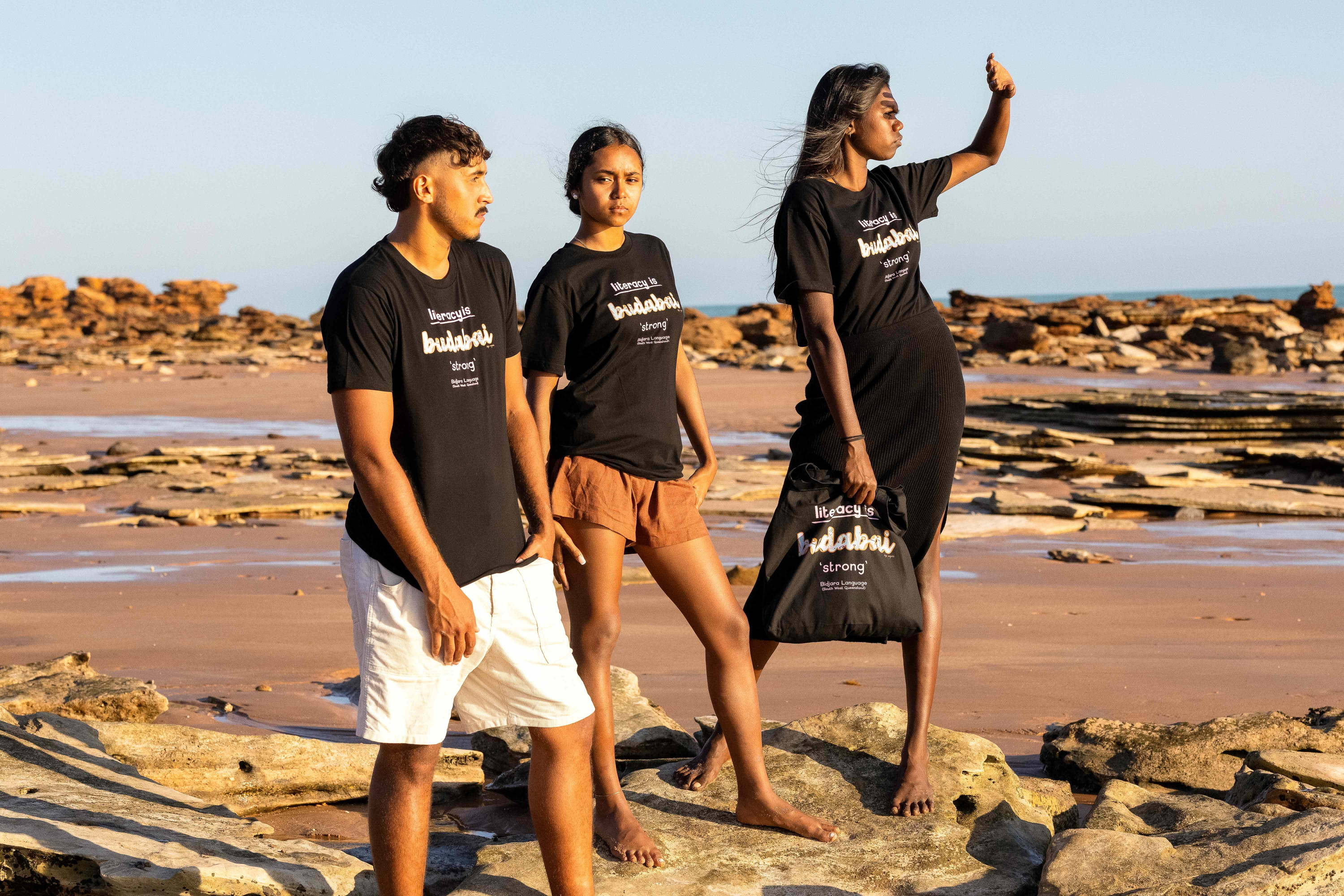
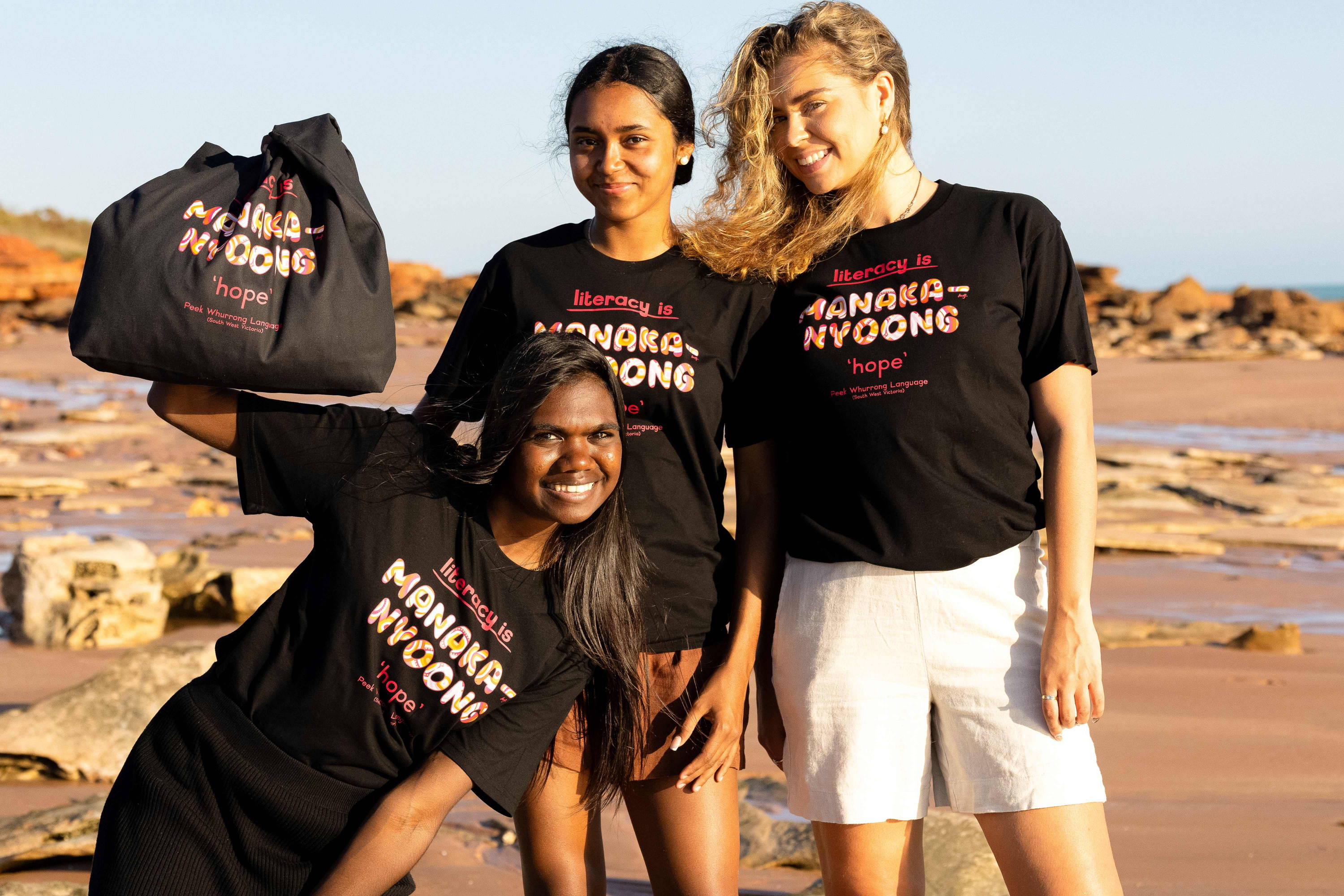
Love Our Blogs? Read More Articles Now!
Yarn Blog is here to bring you the latest and greatest in First Nations culture, news and shopping. You can find updates on all our best products as well as info about our fantastic collaborating artists right here. Click below to start reading more of our exciting posts!







